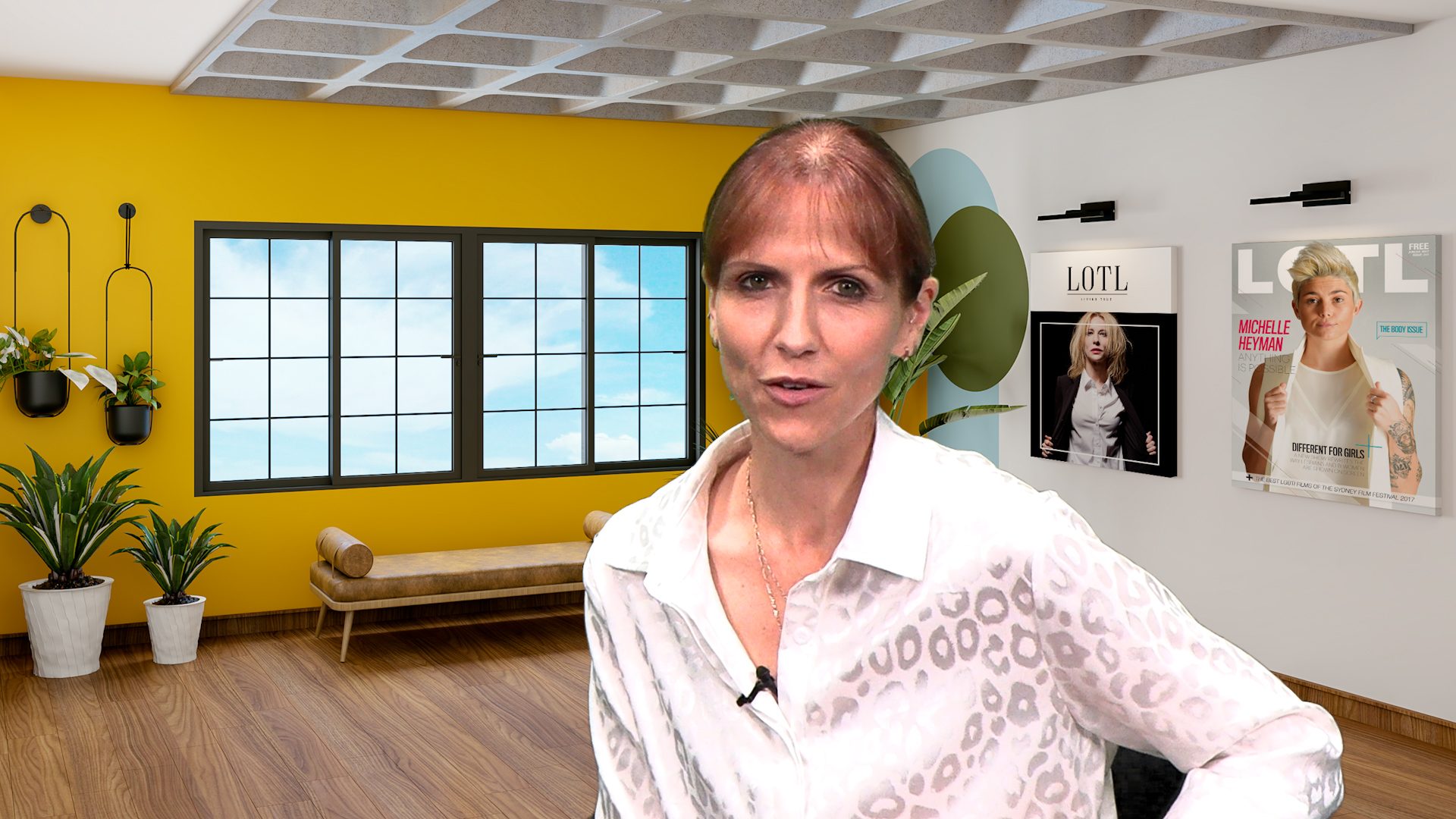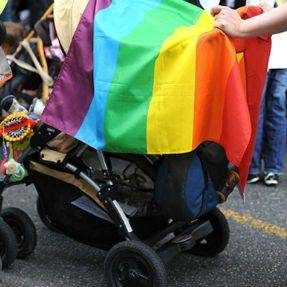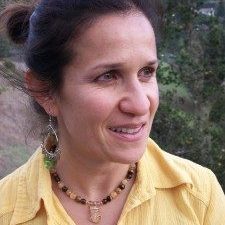
InsideOut Institute for Eating Disorders has launched a new study to understand better the mental health, body image, eating and exercise concerns of people within the LGBTQIA+ community.
LOTL speaks to Shannon Calvert, 46 years Lived, experienced educator.
For years, Shannon’s sexual identity was hidden behind a severe and enduring eating disorder. Her recovery has allowed her to heal the parts of herself beyond her illness; at 46, she is free to come out.
Shannon was officially diagnosed with anorexia nervosa at 13 years old, but as she recalls, her experience started as a young person wanting to disconnect from her body.
“From the age of 4-5, I tried to understand this relationship between me as a person and my body, which felt foreign. I was also confused by how people around me related to their bodies; I feared my size, shape, and image would define my worth.”
Over the next three decades, Shannon experienced severe and enduring anorexia and bulimia that would see her spend time in and out of the hospital as she struggled to access appropriate care.
“No one thought I would live to see my 40th birthday. Towards my late thirties, we started to talk about my end-of-life.”
At that time, Shannon became the carer for her dying mother.
“I remember telling my mum I wanted to go with her. She took my breath away when she gently but confidently said, “No, my girl, you’re going to live”.”
“I was prepared to give up on life, but a small group of compassionate people would not give up on me. I couldn’t accept the impact eating disorders have on people and their families; I had to try and survive this one more time and give myself a chance to heal and maybe help change the system for those suffering.”
Eventually, with supportive and compassionate care and treatment, Shannon embarked on a (bumpy) road to healing.
“It’s a hell of a journey, and the eating disorder seductively tries to keep you down, but I needed to keep going because it was ‘do or die’. Healing was critical to shifting my identity with an eating disorder and mending my relationship with my body. It helped me recognise that my quality of life and self-worth were far more than my diagnosis. I needed to figure that out for myself.”
As Shannon explains, part of that healing journey has been accepting and understanding her authentic queer self with a deep appreciation for the advocacy of her peers in the LGBTQIA+ community, “I’m learning to heal all of me and not just my diagnosis. Accepting I’m queer is something I’ve chosen to embrace, which means coming out on my terms gently.”
“In hindsight, my eating disorder had been a coping mechanism and, in many ways, allowed me to disconnect from my body and avoid self-acceptance. Being so unwell, malnourished and entrenched in an eating disorder, I had minimal capacity or willingness to reflect on its impact. It can feel too frightening and overwhelming when there is a risk of rejection, especially if you’ve experienced trauma such as betrayal or abandonment in your life.”
“Having anorexia felt like a way to numb and desensitize from emotions that I feared I had no control over. I feared permitting myself to be curious about being queer or believe I could be accepted in any community. Throughout my eating disorder, I had no interest or desire to have an intimate connection with someone or explore what being in a relationship was like until I began healing. The realisation of my sexuality was initially confronting, but I have no regrets walking through it.”
“For many people in the LGBTQIA+ community, an eating disorder can be a way to desperately try to control fear and anxiety driven by the potential risk of being rejected or having someone you love not understand or accept you. Some of us grew up where being diverse or feeling differently was frowned upon. We are improving at acknowledging and embracing that no person should ever feel they must fit in any box.”
Shannon acknowledges she’s had the privilege of meeting the social norms, often perceived as a cisgender white heterosexual female, “Although many of past experiences in treatment included shame, stigma and trauma for having an eating disorder and mental ill health, I wasn’t subjected to the type of discrimination that peers from the non-binary and trans community experienced because of their identity.”
Nevertheless, when it comes to eating disorders, Shannon says, “It’s important to acknowledge that eating disorders are far more psychologically entrenched and complex than just food, diet and body image.”
“We all need to be accountable for our own bias and how we accept ourselves and our own identity if we genuinely want to support and accept the uniqueness and diversity of others in a trauma-informed way.”
Shannon encourages anyone struggling with eating, exercise, weight and body concerns or behaviours to seek help.
“Healing and recovery is a human right for any-body experiencing an eating disorder and should never be determined by the severity or duration of your experience, nor discriminate who you are and where you’re from. If you’re struggling, I encourage you to ‘come out’, and ask for help. Our world and perceptions are changing, and many kind and compassionate people will see you, hear you and support you.”
The IncludED Study is the first Australian survey to consider disordered eating collectively and eating disorder diagnoses in LGBTQIA+ adults.
Eating disorders are serious mental illnesses associated with high mortality and low detection and intervention rates. Previous research has indicated that people within the LGBTQIA+ community may be at an increased risk of body image and eating concerns. Community members tend to use health services less and delay seeking treatment and support due to anticipated or actual experiences of stigma by the service providers.2
Lead researcher and Clinical Psychologist Dr Jane Miskovic-Wheatley (she/her) explain, “Homophobia, transphobia, discrimination, bullying, trauma, abuse and alienation from family and certain parts of society can all result in high levels of emotional stress. Sometimes these issues and other risk factors can lead to body image issues or an eating disorder.”
“More than one million Australians are living with an eating disorder at any time. Evidence suggests that those who identify as sexually or gender diverse have an increased risk. But we need a more reliable, sensitive and broad-minded understanding to work towards better advocacy and healthcare,” said Dr Miskovic-Wheatley.
Australian research indicates two-thirds of young trans people have limited their eating because of their gender.3 US research suggests that 54 per cent of LGBTQ adolescents have been diagnosed with an eating disorder during their lifetime, with an additional 21 per cent suspecting that they had an eating disorder at some point during their life.
Co-researcher Dr Phillip Aouad (he/him) explains, “We suspect the prevalence could be similar in Australia, but we also need to understand the predictors of body shape and weight concerns, eating disorders and excessive exercise so understanding and support can be offered much earlier.”
The IncludED study has been designed by members of the LGBTQIA+ community for the community.
Co-researcher Kai Schweizer (they/he), a sexologist, youth worker, and LGBTIQA+ research specialist, explains that: “Eating disorders don’t discriminate and can affect any person at any stage in their lives, regardless of age, sexual or gender identity, or cultural background.”
“We need research to be directed towards the diversity of people who develop eating disorders and for that diversity to be reflected in the research teams themselves.”
Kai is interested in understanding exercise and eating behaviours in trans and gender-diverse people and helping to develop recommendations for screening and supporting healthy behaviours.
“An Australian study found that almost a quarter (23 per cent) of trans young people have a current or previous diagnosis of an eating disorder.3 These numbers are too high,” said Kai.
Co-researcher Marcellinus Kim (he/him) is the Eating Disorder Coordinator for Sydney Local Health District and says the IncludED study will also investigate people’s connections to health services and treatments.
“Traditionally, the LGBTQIA+ community has faced unique barriers to seeking understanding, support and treatment, including stigma, discrimination and a lack of gender-affirming care. We need to do better. We can break down some of these barriers by understanding more about the LGBTQIA+ community’s interactions with the health system, successes and challenges.”
The IncludED study is anonymous and takes 15 minutes to complete online, says co-researcher Dr Sabina Vatter.
“Whether you have had a lived experience of body image or eating concerns or not, everybody aged 16+ in the LGBTQIA+ community is invited to participate,” said Dr Vatter.
Head to IncludedStudy.com.au to find out more.
This study has been approved by the Ethics Review Committee (RPAH Zone) of the Sydney Local Health District. Any person with concerns or complaints about the conduct of this study should contact the Executive Officer on 02 9515 6766 and quote protocol number X22-0419.
Help and Support
Anyone needing support with eating disorders or body image issues is encouraged to contact:
- Butterfly National Helpline on 1800 33 4673 (1800 ED HOPE) or [email protected]
- Qlife 1800 184 527
- For urgent support, call Lifeline at 13 11 14


